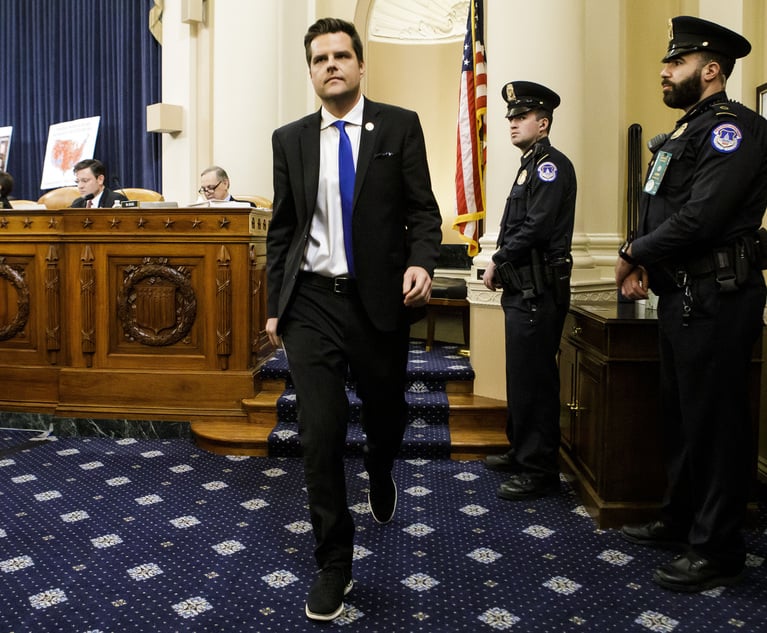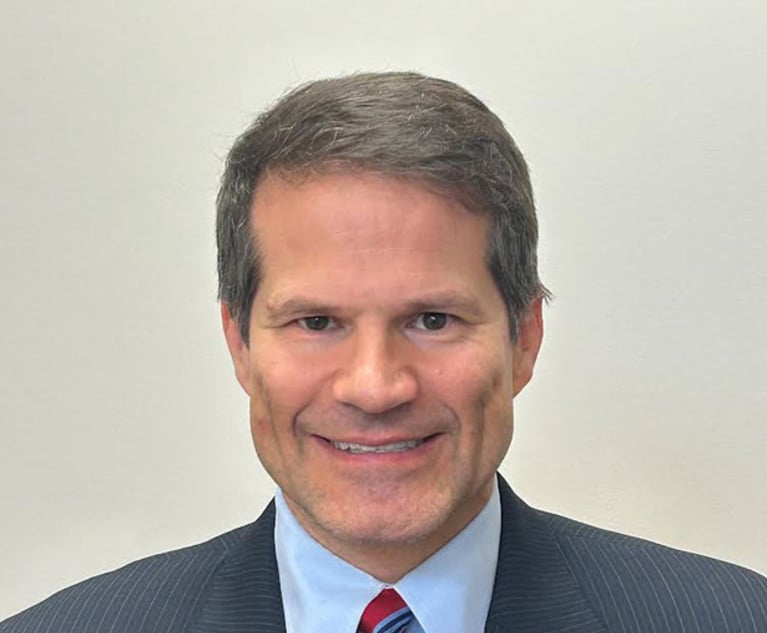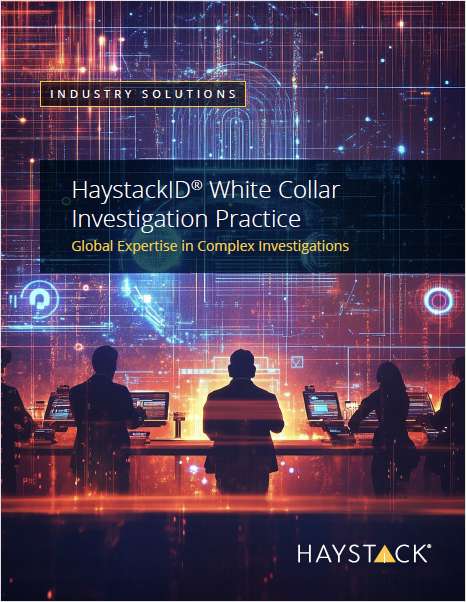4 E-Discovery Pitfalls Judges Wish More People Avoided
At Exterro's inFusion conference, three federal judges explained that the average lawyer has a lot of room for e-discovery improvement, even with seemingly simple tasks like being specific and knowing the court.
October 22, 2018 at 11:00 AM
7 minute read
The original version of this story was published on Legal Tech News

There remains a debate about the actual impact of the 2015 amendments to the Federal Rules of Civil Procedure (FRCP), but when it comes to e-discovery, the bench is certainly paying attention.
At Exterro's inFusion conference last week, a panel of federal judges (moderated by retired federal Judge Andrew Peck) explained that even three years into the new FRCP paradigm, judges still see easy-to-correct e-discovery errors. In fact, to people inside the e-discovery ecosystem, the lack of knowledge in general legal marketplace could be frightening.
“We wish that more of the people who appear before us could be here listening to the types of things that you're all saying in terms of what's going on behind the scenes,” said Elizabeth Deavers, chief magistrate judge in the Southern District of Ohio. “Because a lot of times, I think, by the time they appear before us, they've lost sight of the things that we're trying to do.”
With that in mind, here are four areas where the judges want to see e-discovery improvement, particularly when it comes to proportionality, objections and more.
|1. Be Specific
About 25 years ago, Peck said, firms would offer general objections to discovery requests, which would always end with something to the effect that they wouldn't turn over documents “unless you put a gun to their head.” These days, that won't fly.
“In many cases, that would mean sanctions,” said U.S. Magistrate Judge William Matthewman of the Southern District of Florida. But even so, he said, “I still get those. I will get five- and six-page general objections, and then the response will be some more specific objections, and then they'll say, 'Notwithstanding all that, none of that is deemed an admission, but we'll produce this.' I just strike all that, that's a complete waste of paper.”
These days, the key is to both be specific and to actually relate to the issue at hand. By doing so, added U.S. District Judge J. Michelle Childs of the District of South Carolina, the judge will be better able to work with you—something that wasn't always possible under the old way of general objections.
“For example, if you wish to say instead that there's a legal conclusion, well, we can test that theory,” she explained. “Or if you wish to say, let's cull it down and have a certain amount of documents, we can say that's fair and reasonable. But when you outright object to everything, it gives us nothing to work with.”
The same issue applies to proportionality as well, Deavers noted. “They can't just say, 'It's too expensive, it's not proportional,' without having an affidavit or something from the vendor saying, 'This is how much it's going to cost.'”
|2. Prove Your Point
The affidavit was a key that many panelists brought up. Matthewman said that commonly, the plaintiff's counsel will view e-discovery as a one-click easy button, while the defense counsel will focus on exorbitant costs. In actuality, though, “Neither of them have an affidavit; neither of them have any facts to rely on. And then they will be so litigious at times, I just wonder if the companies and the in-house counsel know what goes on with outside counsel.”
That's why e-discovery legwork before a meet-and confer is crucial. Childs said, “You have to come prepared. You have to know your clients' documents, speak with the technicians, speak with the custodians, know their data management and storage and retrieval systems and how they're going to produce.”
She added that often, this means educating the judge about the technological facts of the case, in a respectful manner. “We're not going to profess that we are technologists and we understand everything about your client's resources. But you need to be able to articulate that to us so that when there's that argument about burden or expense or things of that nature, what are you actually saying to us? Have you really looked?”
Matthewman agreed, saying that many times, attorneys will come to court unable to answer basic e-discovery questions without first asking to talk to outside IT and e-discovery personnel. In a perfect world, though, “you would hope they've already done that before they come into court on a discovery dispute.”
|3. Know Your Judge
It may seem obvious that different courtrooms have different e-discovery rules, but the judges all said that many times, attorneys simply don't know how a court handles e-discovery problems. Especially when looking to educate judges on the facts of a case, Deavers said, it's important to speak the judge's language.
“In my district, in Columbus anyway, the magistrate judges handle all of the discovery issues,” Deavers said. “If you went up to a district judge in my district, they would say, 'What does proportionality mean?' They would have no clue, as opposed to we have a district judge here [Childs, on the panel] who handles all those.”
Matthewman said he runs into this issue with standing orders, which he noted are “not aspirational; they're meant to be followed.” Ignoring these rules, which can often be found on the judge's website, can get a discovery dispute off on the wrong foot before it even begins.
For example, he explained, “with me, if you file a discovery motion, it can't be more than five pages long, and the response has to be in within five days. And then I review it, and I rule on it or set a hearing. So an attorney will come in, from this big firm, and file a 22-page discovery motion, and we strike it or make them go back and make it five pages. The reason for that is we want to move the process quickly.”
|4. Don't Be Afraid to Cooperate
Finally, even though litigation is an inherently adversarial process, that doesn't mean that cooperation won't be in the best interest of the client. Especially since the FRCP amendments, Deavers said she has seen judges take a more active role in case management, but there's only so much judges can do without attorney cooperation.
This cooperation, she said, “it's the touchstone now. … We really want to be involved more too, but it's a give-and-take.”
This give-and-take means a change in attorney mindset, Matthewman added. In many civil cases, he said “it seems like the discovery process is overtaking the actual litigation. It's like the tail wagging the dog, and I couldn't believe the amount of time, six months, 12 months, 18 months, dedicated to discovery.”
He added, “You can still be a zealous advocate, you can still represent your client very well and be professional and cooperate. Just because you're opponents doesn't mean you have to be hostile.”
This means that the best objections are the ones that have been discussed beforehand—they are narrow, to the point, and point out specific areas where the two parties cannot agree.
That way, Matthewman said, “I don't have to feel like I'm a teacher in middle school babysitting people.”
Editor's note: Exterro provided Legaltech News video of the event after its conclusion.
This content has been archived. It is available through our partners, LexisNexis® and Bloomberg Law.
To view this content, please continue to their sites.
Not a Lexis Subscriber?
Subscribe Now
Not a Bloomberg Law Subscriber?
Subscribe Now
NOT FOR REPRINT
© 2024 ALM Global, LLC, All Rights Reserved. Request academic re-use from www.copyright.com. All other uses, submit a request to [email protected]. For more information visit Asset & Logo Licensing.
You Might Like
View All
From ‘Deep Sadness’ to Little Concern, Gaetz’s Nomination Draws Sharp Reaction From Lawyers
7 minute read
‘What’s Up With Morgan & Morgan?’ Law, Advertising and a Calculated Rise
10 minute read
Conservative Boutiques That Backed Trump Reap Their Rewards

What Will Happen to the Nominees in Florida's Southern and Middle Districts?
3 minute readTrending Stories
- 1Construction Worker Hit By Falling Concrete Settles Claims for $2.3M
- 2Phila. Jury Hits Sig Sauer With $11M Verdict Over Alleged Gun Defect
- 3Lost in the Legal Maze: How State Regulations Are Hindering Hemp Operators' Success
- 4New Associates Yearbook 2024
- 5Disbarred Attorney Alleges ADA Violations in Lawsuit Against Miami-Dade Judges
Who Got The Work
Michael G. Bongiorno, Andrew Scott Dulberg and Elizabeth E. Driscoll from Wilmer Cutler Pickering Hale and Dorr have stepped in to represent Symbotic Inc., an A.I.-enabled technology platform that focuses on increasing supply chain efficiency, and other defendants in a pending shareholder derivative lawsuit. The case, filed Oct. 2 in Massachusetts District Court by the Brown Law Firm on behalf of Stephen Austen, accuses certain officers and directors of misleading investors in regard to Symbotic's potential for margin growth by failing to disclose that the company was not equipped to timely deploy its systems or manage expenses through project delays. The case, assigned to U.S. District Judge Nathaniel M. Gorton, is 1:24-cv-12522, Austen v. Cohen et al.
Who Got The Work
Edmund Polubinski and Marie Killmond of Davis Polk & Wardwell have entered appearances for data platform software development company MongoDB and other defendants in a pending shareholder derivative lawsuit. The action, filed Oct. 7 in New York Southern District Court by the Brown Law Firm, accuses the company's directors and/or officers of falsely expressing confidence in the company’s restructuring of its sales incentive plan and downplaying the severity of decreases in its upfront commitments. The case is 1:24-cv-07594, Roy v. Ittycheria et al.
Who Got The Work
Amy O. Bruchs and Kurt F. Ellison of Michael Best & Friedrich have entered appearances for Epic Systems Corp. in a pending employment discrimination lawsuit. The suit was filed Sept. 7 in Wisconsin Western District Court by Levine Eisberner LLC and Siri & Glimstad on behalf of a project manager who claims that he was wrongfully terminated after applying for a religious exemption to the defendant's COVID-19 vaccine mandate. The case, assigned to U.S. Magistrate Judge Anita Marie Boor, is 3:24-cv-00630, Secker, Nathan v. Epic Systems Corporation.
Who Got The Work
David X. Sullivan, Thomas J. Finn and Gregory A. Hall from McCarter & English have entered appearances for Sunrun Installation Services in a pending civil rights lawsuit. The complaint was filed Sept. 4 in Connecticut District Court by attorney Robert M. Berke on behalf of former employee George Edward Steins, who was arrested and charged with employing an unregistered home improvement salesperson. The complaint alleges that had Sunrun informed the Connecticut Department of Consumer Protection that the plaintiff's employment had ended in 2017 and that he no longer held Sunrun's home improvement contractor license, he would not have been hit with charges, which were dismissed in May 2024. The case, assigned to U.S. District Judge Jeffrey A. Meyer, is 3:24-cv-01423, Steins v. Sunrun, Inc. et al.
Who Got The Work
Greenberg Traurig shareholder Joshua L. Raskin has entered an appearance for boohoo.com UK Ltd. in a pending patent infringement lawsuit. The suit, filed Sept. 3 in Texas Eastern District Court by Rozier Hardt McDonough on behalf of Alto Dynamics, asserts five patents related to an online shopping platform. The case, assigned to U.S. District Judge Rodney Gilstrap, is 2:24-cv-00719, Alto Dynamics, LLC v. boohoo.com UK Limited.
Featured Firms
Law Offices of Gary Martin Hays & Associates, P.C.
(470) 294-1674
Law Offices of Mark E. Salomone
(857) 444-6468
Smith & Hassler
(713) 739-1250








